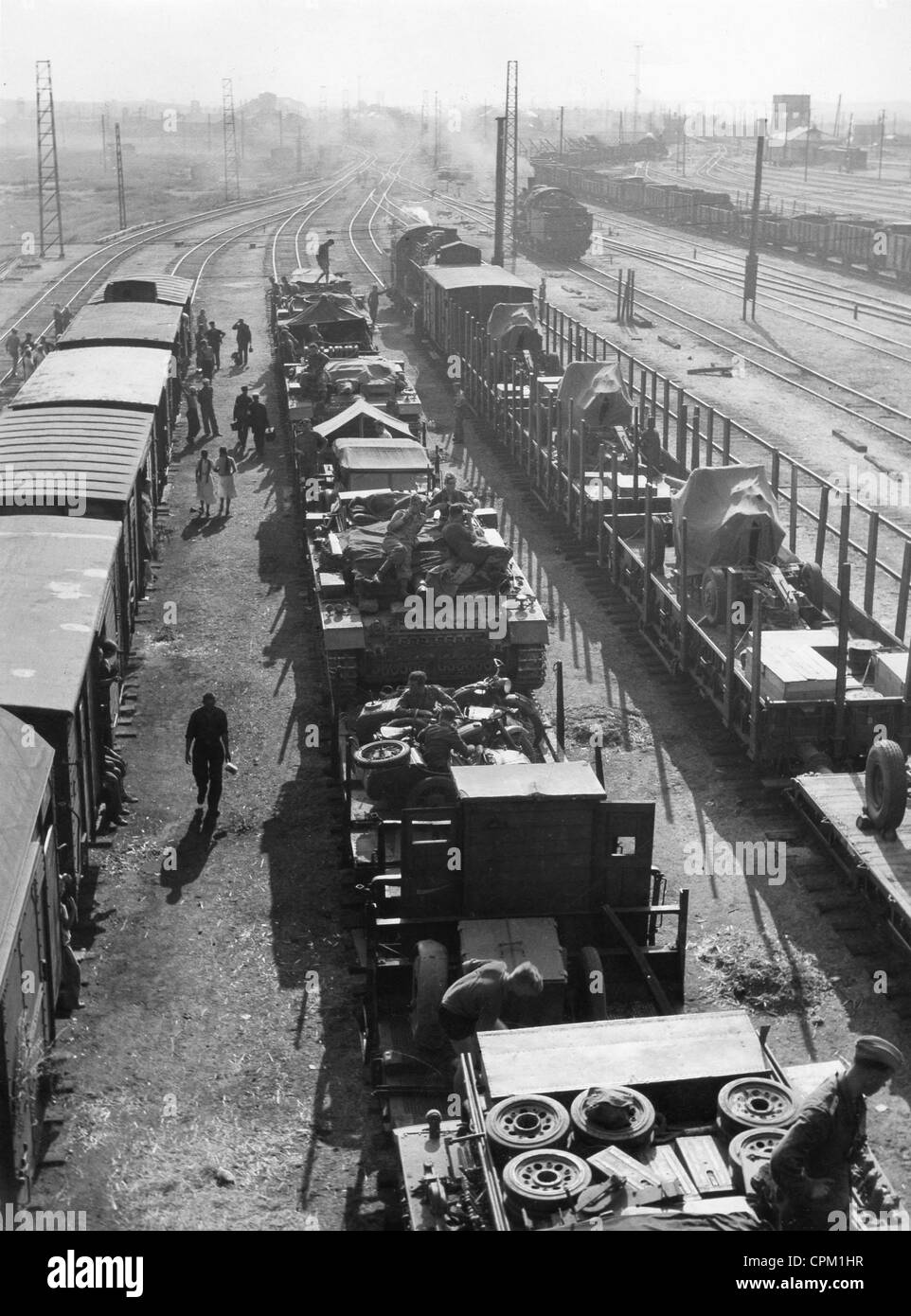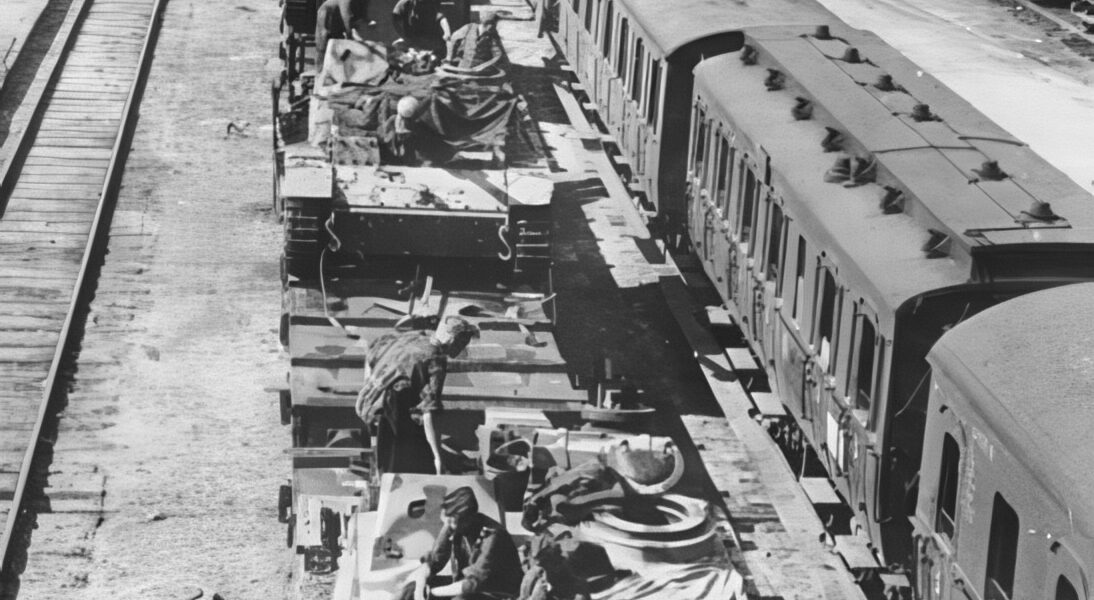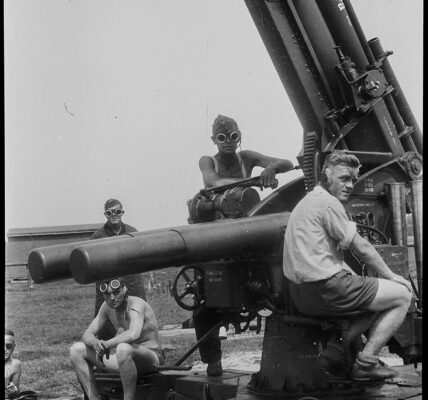Supplies towards the Eastern Front: Assault guns on their way to the front line – August 1943 _de

By August 1943, the Eastern Front had long since become a vast, constantly shifting battle zone. Since the beginning of Operation Barbarossa in June 1941, the war between the German Reich and the Soviet Union had transformed into a massive battle of attrition, tying up millions of soldiers and countless resources. This photograph shows a column of assault guns (StuG) being transported eastward by train—a typical scene for this phase of the war, in which supplies played a central role.
Assault guns were originally intended as infantry support weapons. However, by 1942 at the latest, they had developed into an important element of German anti-tank defenses. Especially the StuG III variants with the long 75 mm gun became the backbone of many units fighting Soviet T-34 tanks. Unlike traditional tanks, they were cheaper to produce and harder to detect due to their low silhouette.

In the summer of 1943, immediately after the costly Panzer Battle of Kursk, the demand for armored vehicles was particularly high. The Wehrmacht had suffered heavy losses in the “Citadel” offensive, and now it was important to close gaps and restrengthen the defensive lines. Trains like the one pictured transported supplies to the front day and night—not just vehicles, but also ammunition, fuel, spare parts, and provisions.
The German railway played a key role in this. Despite Allied air raids, partisan actions, and the increasingly deteriorating supply situation, the transport system functioned remarkably efficiently well into 1944. Freight trains with armored vehicles were often sent directly to the front lines, from where they continued on to operations using their own tracked drives.

But despite such images of “orderly resupply,” one shouldn’t romanticize the reality. The soldiers at the front suffered from chronic shortages—not only of equipment, but also of rest, security, and medical care. Many assault gun crews consisted of young soldiers with only a few weeks of training. Casualty rates were high, and the psychological pressure enormous. In the heat of the Russian summer, on dusty field roads, or in the ruins of destroyed villages, the vehicles were often sent into deadly combat without any cover.
The recording thus documents not only technology, but also a piece of the reality of war. It is a silent yet impressive moment, frozen in time – before smoke and fire once again settled over the fields. Each carriage in this train represents a hope, perhaps even a last chance in a war whose end, for many, was already on the horizon – albeit not openly expressed.

The Eastern Front was a chasm not only militarily, but also morally and humanly. The supply chain, as seen in the photo, was part of a massive machine that claimed millions of lives. Every tank transported meant more fighting, more casualties – on both sides. Nevertheless, the belief in “technical superiority” was firmly anchored in many German command structures, even as reality increasingly contradicted it.
In retrospect, it is precisely these unspectacular moments—a train heading east, a column of armored vehicles—that highlight the dimensions of this war. They depict not the immediate horror of battle, but what precedes it: preparation, organization, movement. Yet behind all of this are people—machine operators, tank crews, railway workers, mechanics. For many of them, the journey ended in a nameless grave somewhere in the vast fields of the Soviet Union.
Today, more than 80 years later, such images serve as a reminder—not of heroic deeds, but of the destructive power of an ideological war. The technology may seem impressive, but it was part of a system that brought immeasurable suffering to Europe. May this image be an opportunity to speak not only about military logistics, but also about its consequences—for people, for history, and for our responsibility today.










